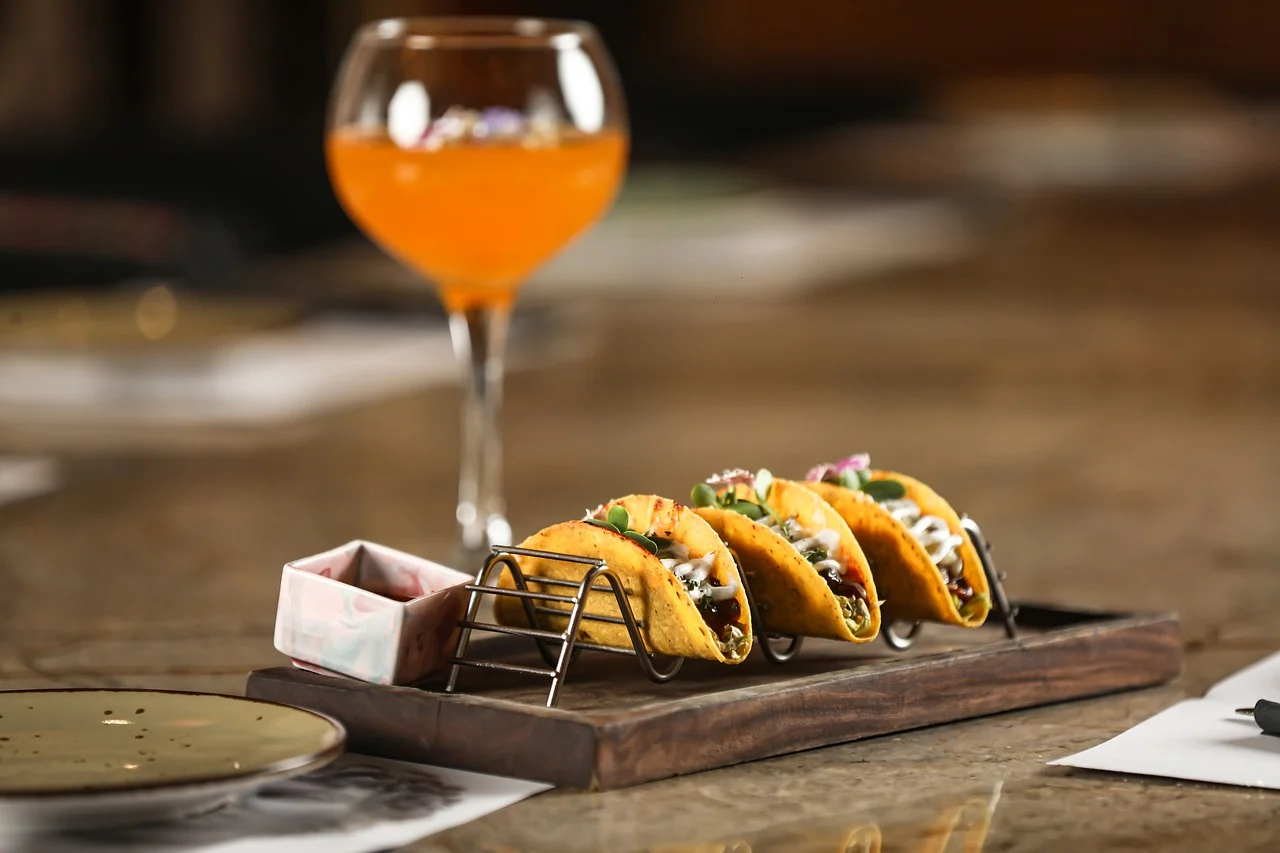This Article has been revised, edited and added to, by Poulomi Chakraborty.
- The Rise of Storytelling in the Food Industry
- Elements of a Compelling Food Story
- Crafting the Narrative: Steps to Effective Storytelling
- From Seed to Table: The Journey Matters
- Stories on the Shelf: Packaging as a Narrative Tool
- Tools and Techniques: Amplifying the Food Story
- In Conclusion: The Last Bite
In the competitive world of food branding, it isn’t just about the taste or the ingredients anymore. It’s about the story that’s being told. With the rise of artisanal products, sustainable farming, and an emphasis on cultural heritage, storytelling has taken center stage in how food brands market themselves. This article delves deep into the art and science of weaving narratives around food products, ensuring that they resonate deeply with consumers and stand out in crowded marketplaces.
The Rise of Storytelling in the Food Industry

Why Stories Matter
Every food item, whether it’s a bar of artisanal chocolate or a loaf of sourdough bread, has a tale to tell. These stories, when effectively narrated, evoke emotions, making products more memorable and fostering brand loyalty.
- Emotional Connection: Stories tap into our human nature. We’re wired to connect with narratives, and food brands that effectively tell their tales can evoke feelings of nostalgia, happiness, or even a sense of adventure.
- Differentiation: In a market flooded with similar products, a compelling story can be the distinguishing factor, making one brand stand out from the rest.
Historical Context
Historically, food was a communal experience, and stories played a vital role. Ancient civilizations passed down tales of hunting expeditions, bountiful harvests, and grand feasts. Today, brands can tap into this primal connection by crafting compelling stories around their products.
Understanding the Evolution and Impact of Storytelling in Modern Food Marketing
In the burgeoning industry of food branding, understanding the evolutionary journey of storytelling can significantly empower startup founders to craft more compelling narratives. Traditionally, food marketing focused primarily on the quality and flavor of the product.
However, in the digital age where consumers are bombarded with countless choices, the backstory of a product—its origin, the passion behind its creation, and the cultural significance—plays a pivotal role in creating a distinct brand identity.
The shift towards storytelling in food branding isn’t merely a trend but a reflection of consumers’ growing desire to make meaningful purchases. They are looking not just to buy a product, but to participate in a story that resonates with their personal values and experiences.
For startups, this shift offers a golden opportunity to differentiate their offerings in a saturated market.
Crafting Stories That Resonate and Engage
For a startup founder, the challenge lies in not just telling a story, but telling a story that sticks. The narrative should be immersive enough that the consumer feels an emotional attachment to the food item.
To achieve this, founders must delve deeper into the ‘why’ and ‘how’ of their products. This means going beyond the basic elements of the product to explore the broader social, environmental, and economic impacts of their brand’s process and philosophy.
One effective strategy is to integrate the brand’s impact on the community or the environment into the narrative. For instance, if a brand is involved in direct trade practices, sharing stories of how these practices improve the livelihood of local farmers can create a powerful emotional response.
Similarly, detailing a commitment to sustainability can appeal to environmentally conscious consumers, making them feel that they are contributing to a cause greater than themselves just by choosing one brand over another.
Leveraging Technology to Amplify Your Food Story
In today’s tech-driven market, digital tools offer innovative ways to tell a brand’s story. Interactive content like virtual tours of farms and factories, or behind-the-scenes documentaries about sourcing and production, can significantly enhance consumer engagement. This not only bolsters transparency but also builds trust.
Moreover, leveraging social media platforms to create interactive narratives where consumers can share their own experiences and stories related to the brand can foster a sense of community and belonging. This interactive approach not only amplifies the brand’s message but also makes the consumers feel like active participants in the brand’s journey.
The Strategic Advantage of Narrative Depth
For food startups, the art of storytelling is more than a marketing strategy; it is a fundamental pillar of brand identity. In a market driven by not just consumer need but consumer values, the stories behind a brand become as important as the quality of the products it offers. Therefore, crafting narratives that offer depth, authenticity, and engagement is crucial.
Incorporating these strategies into your branding efforts can help you build a loyal customer base, differentiate your offerings in a competitive market, and ultimately drive growth. Remember, in the world of food branding, a good story can be just as satisfying as the product itself.
Elements of a Compelling Food Story

Authenticity
For a narrative to resonate, it must come from a place of authenticity. Brands should focus on genuine experiences, traditions, and processes related to their product.
- Founder Tales: Personal experiences of founders, especially struggles or unique journeys, can form the cornerstone of a brand’s narrative.
- Traditions: If a product is rooted in cultural or familial traditions, highlighting these aspects can add layers to the story.
Visual Imagery
A picture is worth a thousand words, and in the food industry, it can be worth much more. Visual storytelling can capture the essence of a brand and appeal to the senses.
- Production Process: Photos or videos of the actual production process, be it farming, baking, or brewing, provide a transparent look into how the product reaches consumers.
- Artistic Interpretations: Creative visuals, illustrations, or animations can add a whimsical touch, capturing the brand’s essence.
Sensory Appeal
Food engages all our senses. Brands should consider how their story appeals to sight, smell, taste, touch, and even sound.
- Taste Testimonials: Sharing experiences of those who tasted the product, emphasizing texture, flavor, and aroma can be powerful.
- Behind-the-Scenes: Explaining the choice of ingredients, their sources, and the care taken in crafting the product can engage consumers on multiple sensory levels.
Infusing Personality and Character into Brand Narratives
In the landscape of food branding, it’s crucial for startup founders to infuse their narratives with personality and character that reflect their brand’s ethos and spirit. This goes beyond merely showcasing the product or its features; it involves portraying the brand as a character within its own story.
Consider the brand as a protagonist whose journey, challenges, and achievements you narrate. This approach allows consumers to connect with the brand on a personal level, seeing it not just as a choice but as a character they root for in their daily lives.
Emphasizing the human elements—such as the passion, dedication, and creativity that go into product creation—can make the narrative more relatable and engaging. For instance, sharing stories of how a founder’s childhood experiences inspired a new flavor can create a more intimate connection with the audience, making the brand feel accessible and authentic.
Leveraging Emotional Triggers Through Narrative Anchors
To make a food story truly compelling, it’s important to leverage emotional triggers that can anchor the narrative in the hearts and minds of consumers. These triggers can be values like nostalgia, joy, or a sense of achievement associated with overcoming obstacles.
By embedding these emotional anchors into your story, you create memorable moments that resonate emotionally, making the narrative more likely to be shared and remembered.
An effective way to implement this is through the strategic use of language and imagery that evokes these emotions. Descriptions of smells, tastes, and scenes that tie back to warm, personal experiences can turn a simple product description into a relatable story.
For example, describing how the scent of your bakery’s fresh bread is reminiscent of Sunday mornings at grandma’s house can evoke a powerful emotional response linked to comfort and family.
Strategic Use of Multi-Channel Storytelling
In today’s multi-platform environment, ensuring that your food story is consistently engaging across all channels is essential for coherence and brand recognition. This means tailoring your narrative to fit different mediums while maintaining its core message.
Each platform offers unique opportunities for storytelling; for instance, Instagram can showcase stunning visuals of the food and its preparation, while a blog might delve into detailed narratives about sourcing and craftsmanship.
Moreover, integrating interactive elements like customer-generated content, where consumers share their own experiences with the product, can expand the narrative organically. Encouraging customers to tell their own stories related to the brand not only enhances engagement but also builds a communal sense of ownership and loyalty to the brand.
Storytelling Through Sensory Marketing
Finally, for food brands, tapping into sensory marketing within storytelling can significantly enhance the impact of the narrative. This involves describing the product in a way that stimulates all the senses, not just taste. Detailing the crunch of a cookie, the sizzle of a spice, or the smoothness of a sauce can transform a simple story into an immersive sensory experience.
Incorporating sensory elements effectively requires careful thought about how each sensory detail supports the overall narrative. It’s not just about the sensory experience itself but how that experience contributes to the story you’re telling—whether it’s the authenticity of traditional cooking methods or the innovation in how flavors are combined. This strategy not only makes the story more vivid but also more engaging, as consumers can almost experience the product through your words.
Crafting the Narrative: Steps to Effective Storytelling

Start with the Why
Brands must be clear on why they exist. Is it to revive a lost recipe? Promote sustainable farming? Or celebrate a specific culture’s culinary heritage? This ‘why’ forms the story’s foundation.
Engage with Your Audience
Engaging with consumers can provide valuable insights. Brands can:
- Solicit Feedback: Understand what aspects of the product or its story resonate most with consumers.
- Interactive Campaigns: Run campaigns encouraging consumers to share their stories or experiences with the product.
Consistency Across Channels
Whether it’s the product packaging, social media posts, or TV commercials, the story must remain consistent.
- Unified Messaging: Ensure that all brand communications align with the central narrative.
Celebrate the Unsung Heroes
Every product has heroes behind the scenes. It could be the farmer, the baker, or the artisan. Bringing their stories to the forefront can add depth to the narrative.
- Profiles and Interviews: Highlight the individuals who play a pivotal role in bringing the product to life.
Establishing a Narrative Framework
When crafting the narrative for a food brand, it’s essential to establish a strong narrative framework that guides the storytelling process from inception to execution. This framework serves as the backbone of the brand’s story, ensuring that every piece of content produced aligns with the overarching theme and goals of the brand.
For startup founders, this means starting with a clear understanding of the brand’s mission, vision, and values, and how these elements can be woven into a compelling story that speaks directly to the target audience.
Creating a narrative framework involves defining the key messages and the tone of voice that will be used to convey them. This might involve choosing a narrative style that is inspirational, educational, or community-focused depending on what resonates most with the intended audience.
The choice of narrative style will influence how the story is told across different media and platforms, ensuring consistency and coherence in the brand’s messaging.
Integrating Customer Journeys into the Narrative
An effective narrative strategy involves integrating the customer journey into the storytelling process. This means understanding the touchpoints where customers interact with the brand and how these interactions can be enhanced through storytelling.
For food brands, this could include the moment of discovery, the purchasing experience, the unboxing, and the consumption of the product.
By mapping out the customer journey, founders can identify opportunities to integrate storytelling elements that enhance the customer experience. For example, the story of how a product is made can be shared through QR codes on packaging that link to a video documentary of the production process.
Alternatively, the moment of consumption can be enriched with stories printed on packaging that share the history or cultural significance of the ingredients used.
Driving Engagement Through Narrative Techniques
To effectively engage consumers, startups should employ narrative techniques that not only tell a story but also invite interaction and participation. One way to do this is through the use of narrative arcs that create suspense or anticipation.
For example, a brand could launch a product with a story arc that unfolds over several weeks, revealing different aspects of the product’s backstory or the sourcing of its ingredients through a series of posts, videos, and live interactions.
Another technique is to use metaphors or allegories that align with the brand’s values. These can be powerful in connecting with consumers on a deeper level, as they help to abstract complex ideas into relatable and memorable stories.
For instance, comparing the journey of a coffee bean from its origin to the cup to a hero’s journey can make the everyday act of drinking coffee feel like participation in a larger, more epic story.
Leveraging Data to Tailor and Improve Narratives
In today’s data-driven market environment, startups can leverage consumer data to tailor and improve their narratives. Analyzing data on consumer behavior, preferences, and feedback can provide insights into what story elements resonate most. This information can be used to refine the narrative, making it more engaging and effective.
For instance, if data shows that consumers are particularly interested in sustainability, a brand can emphasize this aspect of its story in its marketing campaigns. Alternatively, if feedback indicates that consumers love behind-the-scenes content, the brand might produce more content that showcases the production process or the people behind the product.
By continuously refining their narrative based on consumer data, food brands can ensure that their storytelling remains relevant and compelling, thereby enhancing brand loyalty and engagement.

Related: Check out our free SEO suite

From Seed to Table: The Journey Matters
Celebrating the Origins
A product’s journey, from its inception to reaching the consumer, is rife with storytelling opportunities.
- Sourcing Tales: Describe the lush fields where the wheat grows, the remote mountainsides where herbs are handpicked, or the deep seas from where the freshest catch is sourced. This not only emphasizes quality but paints a vivid picture in the consumer’s mind.
- Craftsmanship: Delve into the meticulous care, age-old techniques, or innovative methods employed to transform raw ingredients into the final product.
The Impact of Sustainability
With the modern consumer becoming increasingly conscious of their ecological footprint, brands that incorporate sustainable practices have a compelling story element.
- Eco-friendly Processes: Highlighting practices such as using solar energy, water conservation, or reducing waste can resonate with a green-conscious audience.
- Fair Trade and Ethical Sourcing: Brands that ensure fair wages, ethical treatment of workers, and community upliftment can weave these aspects into their narrative, adding a moral dimension.
Emphasizing Transparency in the Supply Chain
In the journey from seed to table, transparency plays a crucial role in crafting a narrative that appeals to today’s informed consumers. For food startups, detailing each step of the supply chain not only enhances the story but also builds trust with the audience.
Startups should consider showcasing their sourcing practices, highlighting relationships with farmers, and explaining their choices of ingredients with an emphasis on quality, ethical practices, and sustainability.
This approach could involve sharing stories about visiting supplier locations, the criteria used for selecting specific farms, or the efforts made to ensure fair labor practices. These stories give consumers a peek into the operational values of the brand, reinforcing the narrative of a company that cares deeply about every aspect of its product lifecycle.
Integrating Technology and Innovation in Storytelling
With advances in technology, food startups have new opportunities to enhance their storytelling by integrating innovative technologies into their narratives. For example, using blockchain technology to track the journey of ingredients from farm to table can be a unique point of interest. This not only serves the purpose of transparency but also positions the brand as forward-thinking and technologically adept.
Furthermore, incorporating technology in the production process, such as the use of AI to optimize the freshness of harvested crops or IoT devices to monitor the growth conditions of produce, can add a layer of intrigue and sophistication to the brand’s story
. Sharing these technological integrations through various media channels can captivate a tech-savvy audience and differentiate the brand in a competitive market.
Creating Emotional Connections Through Local and Global Stories
To make the narrative from seed to table more relatable and impactful, startups can create emotional connections by intertwining local and global elements. This involves not just talking about where ingredients come from, but also how these ingredients are part of a larger global ecosystem.
For instance, a startup could share how using local spices supports regional agriculture and also contributes to preserving a piece of global culinary heritage.
Additionally, by highlighting the cultural significance of certain ingredients or recipes, brands can appeal to the emotions of consumers who value cultural history and authenticity. Stories that connect a local ingredient to a global story, such as how a local chili variety is used in cuisines around the world, can enhance the perception of authenticity and quality.
Leveraging Consumer Engagement for Collaborative Storytelling
A powerful way to deepen the narrative is to engage consumers directly in the storytelling process. Startups can invite consumers to share their own experiences with the brand’s products, from cooking to serving to enjoying with friends and family.
These consumer stories can then be integrated into the larger narrative, creating a multifaceted and collaborative story that resonates with a wider audience.
Encouraging consumers to submit recipes, photos, or videos that show the product in use can foster a sense of community around the brand. These contributions not only provide authentic content that can be used in marketing but also make consumers feel like active participants in the brand’s story, deepening their loyalty and connection to the brand.
By focusing on these strategic aspects of storytelling from seed to table, food startups can craft narratives that are not only compelling and rich in detail but also strengthen consumer trust and engagement, setting the foundation for lasting brand success.
Stories on the Shelf: Packaging as a Narrative Tool

In a store, the first interaction a consumer might have with a product is through its packaging. Making this count is crucial.
Illustrative Designs
- Artwork: Commissioning artists to create unique designs for packaging can turn products into conversation starters. These designs can depict the product’s story, its origins, or its cultural significance.
- Interactive Elements: QR codes that lead to videos, augmented reality experiences, or even simple ‘Did you know?’ facts can engage consumers, making them spend more time with the product.
Packaging Materials Tell a Story Too
- Sustainable Packaging: Using recycled or biodegradable materials can echo a brand’s commitment to the environment.
- Traditional Wrappings: Using materials or techniques indicative of a region or culture can bolster the authenticity of a product’s story.
Creating a Visual Identity with Packaging
The packaging of a product often serves as the first point of contact between the brand and the consumer, making it a critical component of the storytelling process. For startups, investing in innovative packaging design that communicates the brand’s story visually can significantly impact consumer perception and decision-making at the point of sale.
This requires a thoughtful approach to the design elements used on packaging, such as colors, fonts, and imagery, ensuring they align with the narrative and values of the brand.
For example, a startup could use packaging that features hand-drawn illustrations or patterns that reflect the artisanal nature of the product or cultural influences relevant to the brand’s story. Such designs can evoke a sense of authenticity and craftsmanship, appealing to consumers looking for unique, high-quality products.
Integrating Interactive Elements in Packaging Design
To further engage consumers, food startups can integrate interactive elements into their packaging. This can range from QR codes that link to multimedia content about the product’s origin and production, to augmented reality experiences that can be accessed via smartphones.
These technologies not only enhance the consumer’s unboxing experience but also provide an opportunity to deepen the narrative and educate consumers about the brand in an engaging way.
For instance, a QR code on a package of coffee beans could take consumers on a virtual tour of the coffee plantation, introducing them to the farmers, showing the harvesting process, and explaining the brand’s sustainability practices. Such interactive experiences can leave a lasting impression and foster greater consumer loyalty.
Using Packaging to Highlight Product Differentiators
Startup founders should use packaging as a tool to highlight what sets their product apart from competitors. This involves clearly communicating the product’s unique selling points through packaging design.
Whether it’s a special ingredient, a unique method of production, or a commitment to sustainability, these differentiators should be prominently featured on the packaging to catch the consumer’s eye and convey the product’s value proposition effectively.
Additionally, incorporating storytelling elements that detail these differentiators can help educate consumers about why these features matter. For example, if a product uses a rare ingredient that enhances flavor or nutritional value, the packaging can provide a short story or factoid about this ingredient, its benefits, and why the brand has chosen to include it.
Leveraging Sustainability in Packaging
As consumers become more environmentally conscious, incorporating sustainable practices into packaging design can enhance the narrative and appeal to eco-friendly values. Startups can use materials that are recyclable, biodegradable, or sourced from sustainable practices.
Moreover, clearly communicating these eco-friendly aspects through the packaging not only informs consumers but also strengthens the brand’s position as a responsible business.
Communicating this commitment to sustainability can be achieved through the use of certain symbols, certifications, and messaging on the packaging that reassure consumers about the environmental impact of their purchase.
This approach not only serves the practical purpose of reducing the environmental footprint but also builds a strong emotional and ethical connection with consumers who value sustainability.
By strategically utilizing packaging as a narrative tool, food startups can create a more immersive and memorable brand experience that resonates with consumers and stands out in the competitive market landscape.
Tools and Techniques: Amplifying the Food Story

Digital Storyboards
Brands can employ digital storyboards on their websites, taking visitors through a visual and textual journey of the product.
Augmented Reality (AR) Experiences
AR can bring a product’s story to life. Scanning a product with a mobile device can transport consumers to farms, workshops, or historical timelines.
Collaborative Storytelling
Leveraging chefs, food critics, or influencers to narrate or enhance the brand’s story can lend it additional credibility and reach.
Harnessing the Power of Video Storytelling
Video content has become one of the most powerful tools for storytelling, particularly in the food industry where the appeal to sensory experiences is vital. For startups, developing a video storytelling strategy that showcases the journey of their products from inception to consumption can create compelling content that engages and educates the audience.
Videos that feature high-quality production, engaging narratives, and visually appealing content can make the story of a food product come alive.
Founders should consider producing a variety of video types, including short-form videos for social media that highlight quick, captivating aspects of their story, and longer documentary-style videos that delve into the depth of their brand’s philosophy, sourcing, and production processes.
These videos can be strategically released across different platforms to maintain consumer interest and engagement over time.
Utilizing User-Generated Content to Build Community
Encouraging user-generated content (UGC) is an effective technique to amplify a food brand’s story. When customers share their own experiences with a brand’s products, whether through photos, videos, or testimonials, it adds authenticity and relatability to the brand narrative.
Startups can foster a community of brand advocates by engaging with this content, promoting it on their own channels, and even featuring customer stories in their marketing materials.
For example, a brand could create a hashtag for customers to use when posting about their products and run regular competitions or giveaways to incentivize participation.
Not only does this approach help spread the brand’s message through the voices of actual users, but it also builds a library of authentic content that can be leveraged in future marketing campaigns.
Leveraging Data Analytics for Story Refinement
In the age of data, understanding audience response and interaction with your brand’s story is crucial for refinement and success. Food startups should invest in data analytics tools to track how their stories are being received across different channels.
This data can provide insights into which parts of the narrative resonate most with the audience, what content drives engagement, and which storytelling techniques are most effective.
By analyzing consumer behavior and feedback, startups can adjust their storytelling strategies in real-time, ensuring that their narratives are always aligned with audience preferences and market trends.
This responsive approach allows brands to stay relevant and connected with their audience, continually improving the effectiveness of their storytelling.
Integrating Interactive Technology for Enhanced Story Engagement
Interactive technology, such as augmented reality (AR) or virtual reality (VR), can take storytelling to a new level by offering immersive experiences that are both engaging and informative. For instance, an AR app could allow consumers to see how products are made by simply scanning a package, or a VR setup at a trade show could transport visitors to a vineyard or factory.
These technologies not only entertain but also deepen the consumer’s understanding of the brand and its values. They can be particularly effective at trade shows, in retail environments, or even through mobile apps, providing startups with a unique way to differentiate themselves and make their products stand out on the shelves.
By adeptly utilizing these modern tools and techniques, food startups can effectively amplify their stories, creating deeper engagement with their audiences and building a strong, resonant brand presence in a competitive market.
In Conclusion: The Last Bite
Food is more than just sustenance; it’s an experience, a memory, a story. In the cacophony of brands vying for consumer attention, a well-crafted narrative can be the symphony that strikes a chord. Whether it’s the tale of a grandmother’s secret recipe, the journey of an ingredient from a remote village, or the fusion of age-old techniques with modern innovation, storytelling in food branding is the secret sauce that adds depth, flavor, and soul to a brand.
As we’ve journeyed through the multifaceted world of storytelling in food branding, one thing is abundantly clear: the brands that resonate, engage, and endure are those that craft authentic, multi-sensory, and evolving narratives. In the vast culinary landscape, it’s not just about the flavors on a plate, but the stories behind them. And as every chef knows, the secret to a memorable dish is the perfect blend of ingredients—and in branding, the most potent ingredient is a well-told story.
Read Next:
- Pinterest and Instagram: A Visual SEO Strategy for Biotech Startups
- LinkedIn SEO for Lifesciences Networking
- Aligning Startup SEO Budget with Business Objectives
- Startup SEO ROI: Analyzing Customer Lifetime Value Impact
- Budgeting for Startup SEO Tools: Maximizing ROI






















Comments are closed.